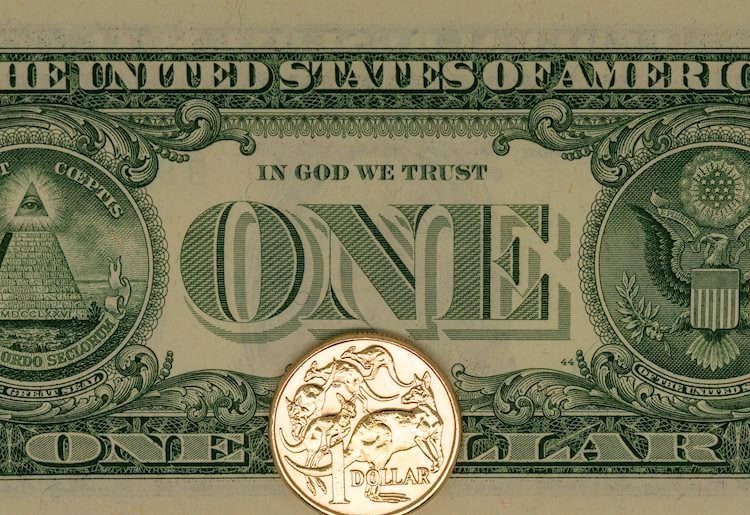- AUD/USD shows slight decrease since Monday but retains January highs near 0.6800.
- RBA’s hawkish stance and potential rate hike add momentum to AUD.
- Australian labor data will dictate the short-term dynamics.
The Australian Dollar (AUD) experienced a mild correction against the USD in Monday’s session, declining to 0.6760. After a four-day winning streak, the AUD adjusted its gains albeit the underlying fundamental factors hint at a possible continuation in the upward trend.
The Reserve Bank of Australia (RBA) despite several signs of economic weakness in the Australian economy, is viewed to be among the last G10 nations’ central banks to initiate rate cuts due to stubbornly high inflation; a factor that might limit AUD’s downside and extend its gains.
Daily market movers: AUD may gain as labor data may justify the RBA’s hawkish stance
- On the economic data front, both the markets and investors are focusing on the Australian Employment data for June, which is due for publication on Thursday.
- The report is expected to show that 20K job-seekers were hired against 39.7K onboarded in May.
- The unemployment rate will be on the look and if it remains steady at 4.0%, it would indicate a strong labor market, hence, fuelling expectations of further policy-tightening by the Reserve Bank of Australia (RBA).
- According to recent market speculations, there is nearly a 50% chance of a rate hike in either September or November on the RBA’s side.
- On the other hand, the market sees 80% odds of a September cut by the Federal Reserve, dependent of course on the incoming data. Key speeches by Powell on Monday, and other officials this week will provide more clarity.
Technical Analysis: AUD/USD sustains highs, overbought indicators hint at looming correction
Despite the mild correction on Monday, the AUD/USD maintains a bullish stance, retaining the heights seen since January. Parallelly, the pair climbed by more than 1.5% in July, suggesting a strong upward move. However, the Relative Strength Index (RSI) and the Moving Average Convergence Divergence (MACD) indicate nearing overbought territory and some exhaustion, suggesting a possible correction is on the horizon.
Buyers’ target remains to maintain the 0.6760-0.6780 range and possibly surpass the 0.6800 area. Conversely, the 0.6730, 0.6700, and 0.6650 levels are set as the support ranges in case of a correction.
RBA FAQs
The Reserve Bank of Australia (RBA) sets interest rates and manages monetary policy for Australia. Decisions are made by a board of governors at 11 meetings a year and ad hoc emergency meetings as required. The RBA’s primary mandate is to maintain price stability, which means an inflation rate of 2-3%, but also “..to contribute to the stability of the currency, full employment, and the economic prosperity and welfare of the Australian people.” Its main tool for achieving this is by raising or lowering interest rates. Relatively high interest rates will strengthen the Australian Dollar (AUD) and vice versa. Other RBA tools include quantitative easing and tightening.
While inflation had always traditionally been thought of as a negative factor for currencies since it lowers the value of money in general, the opposite has actually been the case in modern times with the relaxation of cross-border capital controls. Moderately higher inflation now tends to lead central banks to put up their interest rates, which in turn has the effect of attracting more capital inflows from global investors seeking a lucrative place to keep their money. This increases demand for the local currency, which in the case of Australia is the Aussie Dollar.
Macroeconomic data gauges the health of an economy and can have an impact on the value of its currency. Investors prefer to invest their capital in economies that are safe and growing rather than precarious and shrinking. Greater capital inflows increase the aggregate demand and value of the domestic currency. Classic indicators, such as GDP, Manufacturing and Services PMIs, employment, and consumer sentiment surveys can influence AUD. A strong economy may encourage the Reserve Bank of Australia to put up interest rates, also supporting AUD.
Quantitative Easing (QE) is a tool used in extreme situations when lowering interest rates is not enough to restore the flow of credit in the economy. QE is the process by which the Reserve Bank of Australia (RBA) prints Australian Dollars (AUD) for the purpose of buying assets – usually government or corporate bonds – from financial institutions, thereby providing them with much-needed liquidity. QE usually results in a weaker AUD.
Quantitative tightening (QT) is the reverse of QE. It is undertaken after QE when an economic recovery is underway and inflation starts rising. Whilst in QE the Reserve Bank of Australia (RBA) purchases government and corporate bonds from financial institutions to provide them with liquidity, in QT the RBA stops buying more assets, and stops reinvesting the principal maturing on the bonds it already holds. It would be positive (or bullish) for the Australian Dollar.
